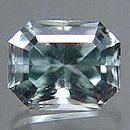|
ClassicGems.net |
|
|
|
|
| Diamagnetic Gems
and |
|
|
|
|
Diamagnetism
Paramagnetism
History
|
|
|
|
|
|
|
|
|
|
||||
| Barite (diamagnetic) |
|
Bismuth (strongly diamagnetic) |
|
Ludlamite (diamagnetic) |
|
Xenotime (paramagnetic) |
||||
|
|
|
|
|
|
|
|



